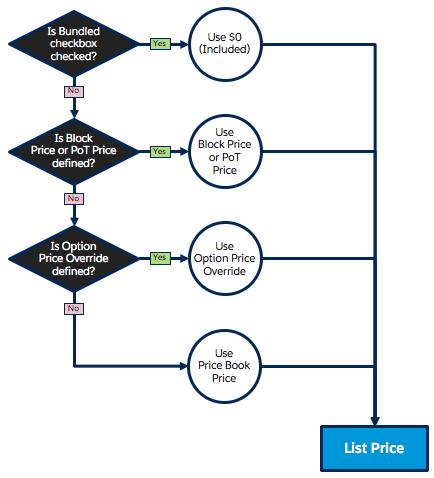

It measures the market risk of a company without the impact of debt. Unlevering a beta removes the financial impact of leverage and isolates the risk arising solely due to a company’s assets. Levered beta is a measurement that compares the volatility of returns of a company’s stock against those of the broader market. In other words, it is a measure of risk, and it includes the impact of a company’s capital structure and leverage.
It is also commonly referred to as “asset beta” because the volatility of a company without any leverage is the result of only its assets. So, a publicly traded security’s levered beta measures the sensitivity of that security’s tendency to perform in relation to the overall market. A levered beta greater than positive 1 or less than negative 1 means that it has greater volatility than the market.
What is the levered beta formula?
However, many experts also refer to it as asset beta because it measures market risks related to the company without factoring in the impact of debt. The average beta of the comparable firms in the industry is 0.9, and the average debt-to-equity ratio of the comparable firms is 0.5. Suppose Company A has a debt-to-equity ratio of 0.25 and a tax rate of 30%. Now, we will use this information to get the unlevered and relevered beta. Since unlevered beta is the beta of a company without considering the impact of financial leverage, it describes the risk of the company only as a result of its assets, not its debt.
Unlevered beta (a.k.a. Asset Beta) is the beta of a company without the impact of debt. It is also known as the volatility of returns for a company, without taking into account its financial leverage. It compares the risk of an unlevered company to the risk of the market.

Unlevered beta measures the market risk of the company without the impact of debt. Beta is a measure of the volatility, or systematic risk, of a security or portfolio in comparison to the market as a whole. It will only give a measure of risk with regard to the company’s assets or risk contributed by equity instruments of the company.
What Is Unlevered Beta ?
Typically, when measuring a company’s assets and debt, one uses the debt-to-equity ratio. The debt-to-equity ratio measures the equity and debt used to fuel a company’s business operations. Companies in capital-intensive industries, such as financial services and telecoms, typically will have a high debt-to-equity ratio. Companies in less capital-intensive industries, such as wholesalers, will typically have a lower debt-to-equity ratio.
Company with a levered beta of 1.62, a tax rate of 20%, a debt of $1,400, and equity of $4,000. When using levered beta to calculate risk it is important to remember that different companies maintain different capital structures. Beta is a measure of an investment’s risk in terms of its volatility relative to the market. In other words, it measures an investment’s exposure to systematic risk. A levered beta indicates a company’s stock price sensitivity to overall market movements. Based on the financial data we’ve collected so far, the pattern between levered beta and the debt/equity ratio should be clear.
- Tax AdvantagesTax Advantage are the types of investments or saving plans that benefit tax exemption, deferred tax, and other tax benefits.
- This can be more pronounced in emerging markets, such as the military coup in Myanmar or the Ortega election and subsequent hold of power in Nicaragua.
- Note that the company being analyzed has debt in its financial statements, but unlevered beta treats it like it has no debt by stripping any debt off the calculation.
- It has inherently less risk than a company with a high debt to equity ratio but has a debt rated below the investment grade.
- To Unilever the beta, we should know the levered beta, which we can get from databases and online sources like Yahoo!
Another company, XYZ Co., which is publicly listed, has a similar nature as ABC Co. XYZ Co. has total equity of $100 million and a debt of $20 million. For XYZ Co., the tax rate is also 35% since it has a larger size. Unlevered beta is used to calculate systematic risk in the market and to measure how a company will move with the market.
Step 2. Calculate Unlevered Beta from Levered Beta
Generally, the Unlevered beta is lower than the levered beta however, it could be higher in some cases especially when the net debt is negative . Once you gather all the financial information, you can convert each of the levered betas to unlevered betas using the unlevered beta formula or unlevered beta calculator. The effect of debt is calculated by multiplying the debt-equity ratio with (1 – tax rate) and then adding 1 to this value. You can then calculate the unlevered beta by dividing the levered beta by the effect. Usually, investors use it to measure a stock’s performance with the market without considering the effect of financial leverage. Since debt has a positive impact on a company, investors can remove it from the calculation to get a better insight into the company.
Limitations of Using the Hamada Equation
As it doesn’t include a company’s debt, it can measure a company’s response to the general market risk. Unlevered beta is useful because it measures a company’s risk directly correlated to the market. Levered beta is not as good at detecting systematic risk because a company’s debt component can have a huge effect on its risk profile, regardless of the market. The risk of a firm in its capital structure to the volatility in the market is measured by levered beta.
It is called unlevered beta because it can be estimated by dividing the equity beta by a factor of 1 plus (1 – tax rate) times the debt-to-equity ratio of the company. Levered beta (or “equity beta”) is a measurement that compares the volatility of returns of a company’s stock against those of the broader market. In other words, it’s a measure of risk, and it includes the impact of a company’s capital structure and leverage. Equity beta allows investors to gauge how sensitive a security might be to macro-market risks. For example, a company with a beta of 1.5 has returns that are 150% as volatile as the market it’s being compared to.
This metric also narrows down the systematic risk of a company to the risk only arising out of its assets or from its equity sources. This way, companies with varied capital and debt structures become comparable due to unlevered beta. Removing debt from the beta formula allows an analyst to understand the risk of a company’s assets.
Unlevered beta removes any impact debt can have on a company’s returns. Using the above formula, investors can remove the effect of debt from levered beta. They can do so by multiplying a company’s debt-to-equity ratio with (1 – T). Dividing a stock’s levered beta by this equation will allow investors to calculate its unlevered beta. Let us take the example of Apple Inc. to demonstrate how levered beta is computed for real-life companies. According to information available at one of the stock market database, the 1-year unlevered beta of the company’s stock is 1.08.
A beta of one is equivalent to the risk of the broader market. That is, a company with a beta of one has the same systematic risk as the broader market. A beta of two means the company is twice as volatile as the overall market, but a beta of less than one means the unlevered beta formula company is less volatile and presents less risk than the broader market. Systematic risk is the type of risk that is caused by factors beyond a company’s control. Examples of systematic risk include natural disasters, political elections, inflation, and wars.
Gain in-demand industry knowledge and hands-on practice that will help you stand out from the competition and become a world-class financial analyst. Financial risk is the possibility of losing money on an investment or business venture. Let’s take an example to understand the calculation of Levered Beta in a better manner.
These calculations also require estimating debt beta, which measures the systematic risk for debt returns. Unlevered beta only considers assets when calculating the systematic risk of a company. It removes any effects of leverage and debt from the capital structure. Therefore, it allows investors to assess the business risk of that company without including debt. Usually, unlevered beta is lower than a company’s overall beta.
A levered beta between negative 1 and positive 1 has less volatility than the market. From a financial database you found that equity beta of Tesla Motors Inc. is 0.7, its debt to equity rate is 2 and applicable tax rate is 35%. Just plug in the figures in the following formula to calculate the unlevered beta. With this unlevered beta calculator, you can easily deleverage the equity beta, or levered beta, and convert it into the unlevered beta. Unlevered beta is a very useful metric to assess the risk and volatility of a stock. It measures the movement of a company’s stock against a broad market index, such as the S&P 500, and informs you how volatile the stock is compared to the index.